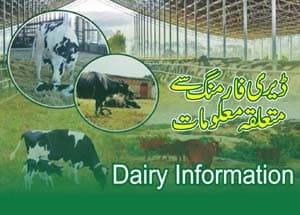
World Bee Day 2024 | History and Theme | Importance of Pollinators including Bees
20 May is the World Bee Day 2024. This day is celebrated to raise awareness about the importance of bees and other pollinators. The focus of the day is on the importance of pollinators including bees in food security and the ecosystem. United Nations designated this day in 2017. The Republic of Slovenia has primary importance in the History of World Bee Day. Bee Day Theme 2024 involves the youth.
World Bee Day and Bee Day Theme 2024
“Bee Engaged with Youth is the Bee Day theme 2024. This Bee Day Theme emphasizes the crucial role that young people can play in addressing the challenges faced by bees and other pollinators. Moreover, World Bee Day 2024 highlights the importance of the involvement of youth in bee conservation and promotion.
World Bee Day aims to promote global cooperation and awareness. It encourages everyone to take part in protecting and enhancing pollinator habitats.
لگڑ بگڑ کا عالمی دن; خصوصیات، اقسام اور دلچسپ حقائق
History of World Bee Day
The history of World Bee Day links with the Republic of Slovenia. In 2014, the Slovenian government began advocating for this day. They proposed May 20th. This was the birthday of Anton Janša, a Slovenian beekeeping pioneer born in 1734. Janša was one of the first teachers of modern beekeeping in Europe۔ Moreover, he was a significant figure in apiculture history.
This proposal gained international support. They presented it to the United Nations. However, on December 20, 2017, the UN General Assembly unanimously adopted a resolution. According to the history of World Bee Day, the first official Day was celebrated on May 20, 2018.
ایگری ٹورازم اور آرگینک پراڈکٹس
Importance of Bees and Importance of Pollinators
Bees are incredibly important to both natural ecosystems and human agriculture. They are important Pollinators and make honey. They are essential for pollinating crops. These crops include fruits, vegetables, nuts, and seeds.
The importance of Pollinators is in plantations also. Bees contribute to the reproduction of many wild plants, supporting biodiversity. Bees facilitate this by transferring pollen. However, Pollination by bees supports the growth of trees, flowers, and other plants.
The importance of pollinators and the importance of bees is evident from economic value also. The global economic value of pollination by bees is estimated to be hundreds of billions of dollars annually. Moreover, many farmers and rural communities depend on beekeeping as a significant source of income. Furthermore, Bees also contribute to the production of honey, beeswax, and other products. The main importance of bees is in honey production.
Characteristics of Bee
The body of a bee has three parts. These include the Head, Thorax, and Abdomen. Moreover, Bee has a pair of compound eyes with simple eyes called ocelli. This ocelli provides information on light intensity. Thorax of a bee has two antennae with 13 segments in males and 12 in females.
Furthermore, Bee has mandibles and a long proboscis capable of both chewing and sucking. Besides this, the Thorax of a bee has three segments. Each segment has a pair of robust legs and a pair of membranous wings. Its abdomen has nine segments. Three of them were modified into stings. Moreover, Bees typically have two pairs of wings and three pairs of legs.
On the other hand, a Bee contains the digestive and reproductive organs, In females, it ends with a stinger. Moreover, the Bee has branched or plumose hairs on its body that help to collect pollen.
Furthermore, Bee size varies between species from tiny stingless bees to large carpenter bees. On the other hand, the color of bees ranges from metallic green and blue to plain black or striped yellow and black.
Bee Dance and Honey Bee Production
Difference between Bee and Wasps
There are more than 20,000 species of insects, A Bee is one of them. Bee includes honeybees, bumblebees, and thousands of wasp-like and fly-like bees.
Bees have few branched or feathered hairs to which pollen often clings. On the other hand, wasps have unbranched hairs. Bees feed their young with pollen and honey. But wasps feed their young with animal feed like insects and spiders. Moreover, Bees entirely depend on flowers for food like pollen and nectar.
Threats to Bees and World Bee Day
Urbanization, agriculture, and deforestation reduce the natural habitats available to bees. Moreover, the use of pesticides, particularly neonicotinoids, can be harmful or even lethal to bees. Climate changes can disrupt the availability of flowering plants and alter the timing of flowering. So, this climate change is affecting bees’ food sources. Air, water, and soil pollution can adversely affect bee health and the plants they rely on.
Simple actions can make a significant difference in the health and survival of bee populations. The actions include planting bee-friendly flowers, avoiding pesticides, and supporting local beekeepers. World Bee Day 2024 is involving youth for conservation effects.







8 Comments
You can keep yourself and your family by way of being wary when buying prescription online. Some druggist’s websites function legally and offer convenience, reclusion, cost savings and safeguards to purchasing medicines. buy in TerbinaPharmacy https://terbinafines.com/product/trental.html trental
This website really has all of the tidings and facts I needed about this subject and didn’t positive who to ask. TerbinaPharmacy
I couldn’t turn down commenting. Warmly written!
Đến với J88, bạn sẽ được trải nghiệm dịch vụ cá cược chuyên nghiệp cùng hàng ngàn sự kiện khuyến mãi độc quyền.
kuwin sở hữu kho game đa dạng từ slot đến trò chơi bài đổi thưởng, mang đến cho bạn những giây phút giải trí tuyệt vời.
专业构建与管理谷歌站群网络,助力品牌实现全域流量的强势增长。谷歌站群
Tham gia cộng đồng game thủ tại Go88 để trải nghiệm các trò chơi bài, poker phổ biến nhất hiện nay.
搭载智能站群程序,自动化搭建与管理,为SEO项目提供核心驱动力。站群程序